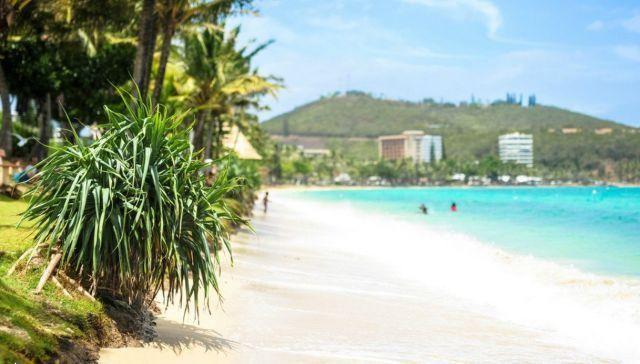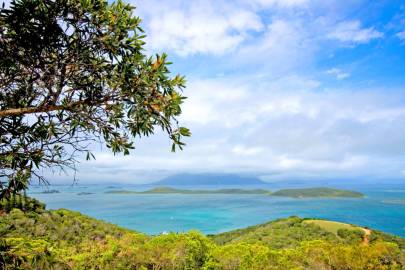
In the middle of the South Pacific Ocean, in the sea triangle between Papua New
Guinea, Australia and New Zealand, on a jagged strip of land, there is Nouméa, capital
of Grande Terre, the main and largest island of the New Caledonia archipelago
French. If you love cosmopolitan cities and the refined atmosphere of France but not on holiday
you want to give up the sea, Nouméa is the right place for you.
The city, with less than 150 thousand inhabitants counting the suburbs, is located in the southern part
of the island, in a small peninsula between low hills and a natural harbor with deep waters. There
they call the “Paris of the Pacific”, for the predominantly French-speaking population that lives there
and for the refined atmosphere that can be felt there, very similar to that of the French capital. But
not only that, because Nouméa is also full of refined French restaurants, precious boutiques and
chic shops.
Her beaches they are beautiful and perfect for those who want to spend their holidays by the sea
full of fun, during the day, among the waves, with windsurfing and sailing, or in the evening, among
restaurants and night clubs. But not only that, because, just like the "original" Paris, also
Nouméa, with due proportions, offers tourists a wide range of attractions for one
holiday dedicated to art and culture.
The main beaches of Nouméa are located south of the city and are those of Ansa Vata,
bordered on the right and left by two imposing rock formations, the Rocher César towards the
point Magnin and the famous Rocher à la Voile, and a little further north, beyond the Rocher à la Voile,
la Bay of Lemons. The two beautiful beaches are bordered by long paths
pedestrian areas, similar to the Promenade des Anglais in Nice, dotted with hotels, restaurants, bars,
shops and discos, for the joy and entertainment of tourists and locals.
But Nouméa is also, and above all, the true artistic and cultural heart of the country, as well as a
pleasantly liveable city. If you don't believe it, come and discover it with your own eyes, visiting its museums, beautiful architecture and the most characteristic corners of the city! Maybe starting your visit from Coconut Square, about 400 meters entirely pedestrian, perfect meeting place, relaxation but also entertainment throughout the year.
Within the 4 hectares of Place des Cocotiers, you will be able to clearly distinguish four others
meeting places, built a bit like squares within a square. The oldest, the Place
Leaflet, was designed around an authentic ancient music newsstand; right in the center
di Place Courbet you can admire the monumental “Céleste” fountain and then there is the Square
Marne, with its open market and live shows, and finally, the Place Olry, rich in
small rooms overlooking the ornamental lake.
And again, not to be missed in the heart of the city, the beautiful Gothic Saint-Joseph's Cathedral, with two 25 square meter towers in local stone and wood, theNoumea Aquarium, which reproduces the lagoons of New Caledonia in absolutely natural environments, with their very rich flora and fauna, and the Biblioteca Bernheim, which houses more than 70 thousand volumes. And then the beautiful Territorial Museum, dedicated to the archeology and ethnology of Oceania. Then pop over to Bay of Moselle, from where daily excursions depart for the Amedée lighthouse, the islet of Maitre and the other paradisiacal islets in the area.
Here every day, from the first light of dawn, you can enjoy the colours, scents and sounds of the Nouméa daily market. Let yourself be won over by the joyful atmosphere and admire the rich stalls with fresh fish, crustaceans and molluscs, local herbs, floral plants and vegetables and colorful and tasty tropical fruits: from papaya to mango, from pineapple to bananas, from coconuts to fruit of passion.
Inhabited today mainly by European citizens, Nouméa also sees a high percentage of
Kanak, of Melanesian origin. If you want to know their history and discover their culture,
don't miss the Centro Culturale Tjibaou, imposing structure in the middle of nature a
10 minutes from the city center, an important testimony to the vitality of Pacific culture.
Through an art center, a museum, performance spaces, a library and a park
landscape, the Children's path it will take you to discover identity and culture
ancestral Melanesian. You will admire the works of art of the Bwenaado house and the impressive ones
Pacific sculptures conceived for the Jinu house. And then the Beretara gallery, with a collection
unique contemporary art of the Pacific region, and multimedia library, with
many interesting documentary resources on Kanak and Pacific culture, including tradition
and contemporaneity.
Before leaving, however, treat yourself to a 360° view of the city, the lagoon, the buttresses and
of the sea. In the southernmost part of the peninsula, you can enjoy a fantastic panorama
from the height of 130 meters of the hill of Ouen Toro. When the weather is good you can see it
even Faro Amédée, built on a small white sand island about 20 kilometers away
from the coast.





